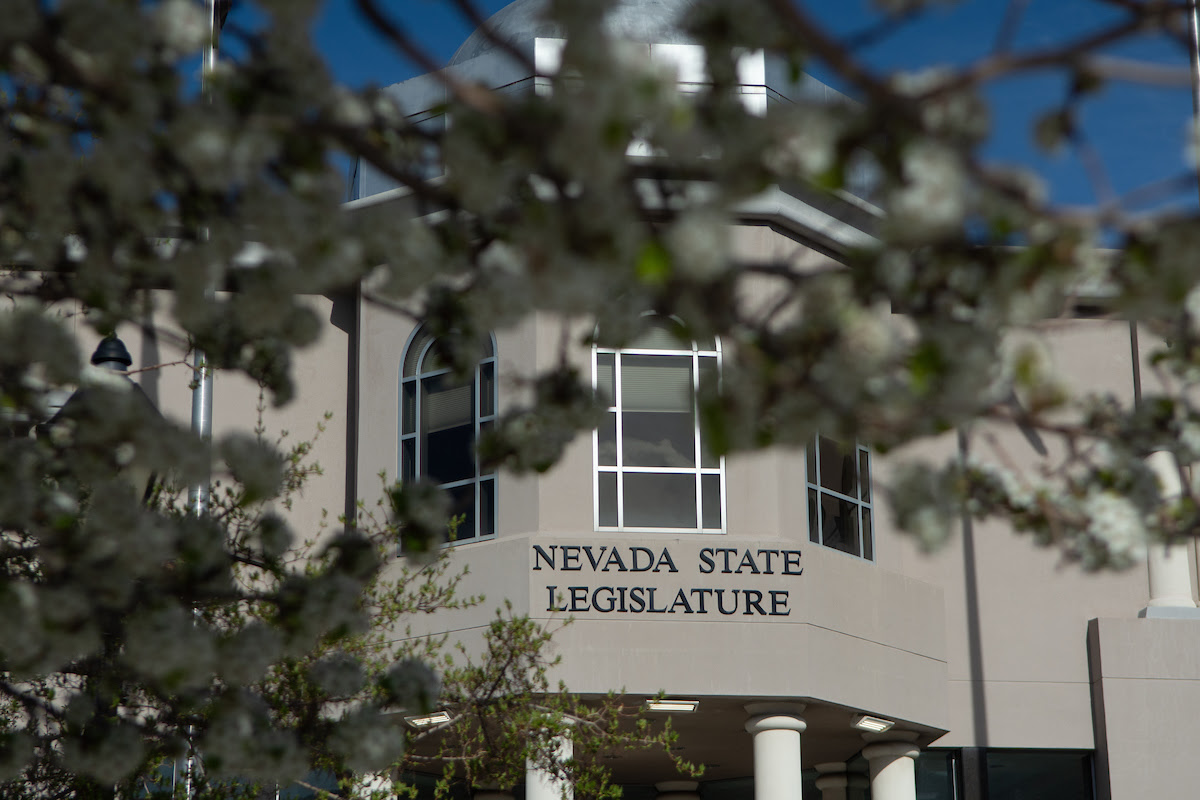After Economic Forum, how do lawmakers plan to spend $251 million in new money?

Monday’s Economic Forum projections — the foundation on which the state’s biennial budget is built — have now yielded an extra $251 million for the state’s coffers, on top of a record-setting $11 billion plus budget already proposed by Gov. Joe Lombardo in January.
But leaders in both parties expressed a sense of caution over just how they want that money to be spent, offering few specific details in interviews this week.
Assembly Speaker Steve Yeager (D-Las Vegas) and Senate Minority Leader Heidi Seevers Gansert (R-Reno) both sat down with The Indy this week to discuss end-of-session priorities and where things stand with just over a month left before sine die.
What happens to the extra money from the Economic Forum?
“Great question,” Yeager said. “I don't have a great answer for you right now.”
Though he didn’t share any concrete proposals, Yeager said he was “delighted” to have more dollars than originally projected and that Democratic leaders want to spend those additional funds on public education, mental health and state infrastructure needs, including capital improvement projects.
He also said he wants to be mindful of not using the money to create programs that will need to be sustained financially in the future and his preference would be to use the money for one-time projects, coordinated by members of the Assembly and the Senate as well as the governor.
Lombardo’s Chief of Staff Ben Kieckhefer, meanwhile, threw water on the size and nature of the extra $250 million, which, he said, includes $50 million for the current fiscal year and another $120 million in interest from investments made by the treasurer’s office.
“So that's $170 million of the $250 [million] that should not be built into ongoing appropriations to fund the operations of state government,” Kieckhefer said. “So we're looking at about $80 million that's available to plug into ongoing costs, and the rest needs to be treated as one-time money.”
The governor’s office wasted little time before publicly releasing its list of priorities, including $25 million for new furniture, equipment and technology for nearly a dozen buildings in Southern Nevada now being eyed as an expansion for state government office space.
The move comes as the governor’s office has backed away from an initial pledge to build two new facilities and instead has pivoted toward leasing more than a dozen buildings at an office park near the Harry Reid International Airport — a move that Seevers Gansert said would free up hundreds of millions of dollars in one-time spending that could be directed toward other potential capital projects.
Still, Seevers Gansert also downplayed the potential for the new Economic Forum projections to make waves in state budget planning over the last month of the session.
“I don't think it changes discussions very much,” Seevers Gansert said. “But it reinforces the expectation that we will have at least the level of revenue that was forecasted in December.”
How much is too much for a Rainy Day?
Yeager emphasized that he does not believe the extra funding should be placed into the state’s rainy day account, which is already “pretty healthy.”
“I don't know yet where the line should be drawn. We do have the highest balance we've ever had and the Rainy Day Fund. We had so much going into it that we actually met the cap — that, we've never done before,” Yeager said.
It was a message Treasurer Zach Conine reiterated during a Wednesday afternoon press conference with Yeager and other elected Democrats.
“While I think it's incredibly important to make sure that we've got a bucket prepared for rainy days, I think it's more important that we fix the roof,” Conine said during the press conference. “We're focused on making sure that we invest those dollars in infrastructure, so that we don't have to rely on the social safety net as frequently as we do.”
The state’s Rainy Day Fund hit record levels of $904 million this year, a number that is capped at 20 percent of the state’s general fund appropriations. A bill from Lombardo’s office heard last week includes a provision that would increase that cap by roughly $600 million.
However, Republicans pushed back and emphasized the need to protect the state in the event of another potential economic downturn.
“It's important that we set aside as much as possible,” Seevers Gansert said in an interview on Tuesday.
Gansert noted that she is one of very few current state lawmakers who worked in the Legislature during the 2009-2011 recession. She said that experience, combined with the state’s economic struggles and budget cuts made amid the COVID-19 pandemic, provided her with a firsthand glimpse of revenue declines and employee furloughs.
“Whatever we decide to do, we need to make sure our ongoing expenses are sustainable and that we have a savings account in case we hit hard times,” she said.
During a press availability Wednesday, Kieckhefer said funding a social safety net and setting aside additional money into the state’s Rainy Day Fund are not mutually exclusive concepts and the governor’s recommended budget does both.
“We want to be extra cautious that new programs that get created, new positions that are funded, are sustainable long term and that if there is a dip in the economy … that we have an adequate savings account to weather that storm,” Kieckhefer said.
Editor’s Note: This story appears in Behind the Bar, The Nevada Independent’s newsletter dedicated to comprehensive coverage of the 2023 legislative session. Sign up for the newsletter here.

